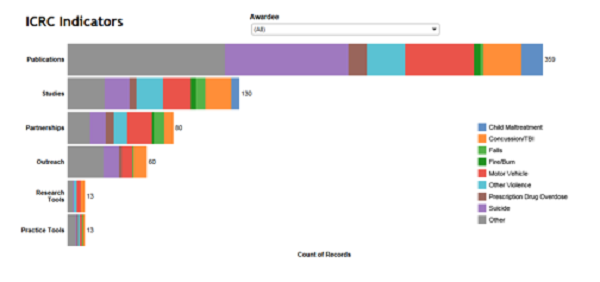Hello! Our names are Natalie Wilkins and Brandon Nesbit and we are both evaluators at the Centers for Disease Control and Prevention (CDC), in the National Center for Injury Prevention and Control (NCIPC).
One of the projects we provide evaluation support for is the Injury Control Research Centers (ICRCs) program, funded through NCIPC. This has provided us with a number of important lessons learned around evaluating multi-site research center programs that are engaging in translational research and outreach.
There are 10 ICRCs across the country, funded to conduct innovative research on the prevention of injury and violence. These institutions serve as training centers for the next generation of injury and violence prevention researchers and act as information centers on injury and violence prevention for the public. ICRCs are also pioneering innovative approaches to the translation of research to practice. They conduct translational research studies and engage in a variety of outreach activities to translate research on evidence-based injury and violence prevention strategies into practice settings. For example, one of the ICRCs works with partners to assess their capacity for using research findings in their work, and then provides tailored technical assistance based on each partners’ specific needs to ensure research is translated into practice. In addition to these “research to practice” activities, some ICRCs are also employing a “practice to research” approach to their translational research, leveraging their outreach activities and partnerships in the field to inform their research priorities.
As evaluators of this comprehensive, multi-site research center program, one of our challenges was to show the impact of the ICRCs’ translational research and outreach activities on bridging the gap between research and practice. To this end, CDC and the ICRCs developed a set of indicators to capture information on impact (e.g. studies, partnerships, outreach activities, development of research and practice tools, etc.). We display data on these indicators through Tableau, software that allows users to analyze, visualize, and share data in an interactive way.
Hot Tip: Visually presenting evaluation data through interactive dashboards allows stakeholders to glean their own insights while still ensuring key messages are communicated. Tableau enables us to showcase the approach and impact of each of these unique research centers, while also providing the option of presenting a “bird’s eye view” of the impact of the entire ICRC program as a whole.
Lesson Learned: Translational research and outreach can take many forms. Engage your stakeholders in the evaluation process early so you can ensure they have a clear understanding of the kinds of information you are looking for.
Rad Resource: For more information on how evaluators have used Tableau, check out the AEA365 archives- http://aea365.org/blog/?s=tableau&submit=Go
he American Evaluation Association is celebrating Translational Research Evaluation (TRE) TIG week. All posts this week are contributed by members of the TRE Topical Interest Group. Do you have questions, concerns, kudos, or content to extend this aea365 contribution? Please add them in the comments section for this post on the aea365 webpage so that we may enrich our community of practice. Would you like to submit an aea365 Tip? Please send a note of interest to aea365@eval.org. aea365 is sponsored by the American Evaluation Association and provides a Tip-a-Day by and for evaluators.

